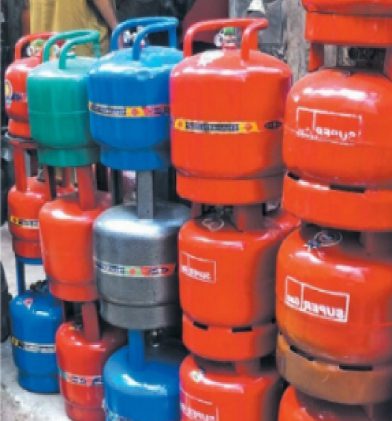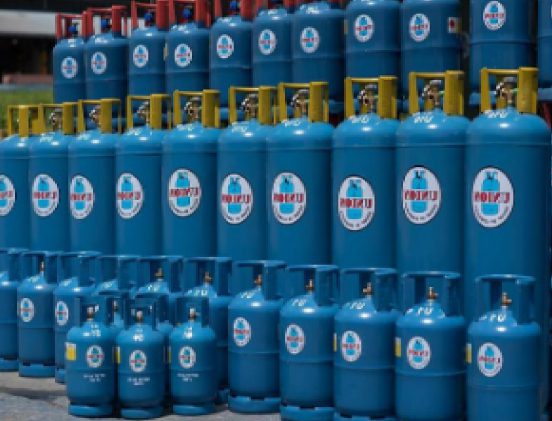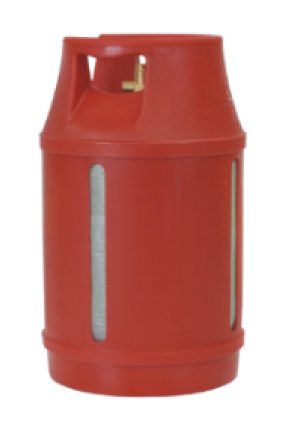LPG Cylinder Asset Tracking
By Cai Weiguo (TrackAbout Global Sales Team)
Liquified Petroleum Gas (LPG), also known as Propane or Butane, is a colourless liquid which readily evaporates into a gas. It is used as a fuel in heating appliances and vehicles. It is now increasingly used as an aerosol propellant and a refrigerant. LPG is stored and handled as a liquid when under pressure inside an LPG gas container. When compressed moderately at normal temperature, it becomes liquid. When gas is withdrawn, the pressure drops and the liquid reverts to gas. This means that it can be transported and stored as liquid and burnt as gas. Safety in handling, transporting and utilizing LPG cylinders involves life and property, and with sustainability and circular economies’ increasingly taking centrestage, here we will take a deeper dive into the considerations of LPG cylinder tracking.
LPG Cylinders






LPG Cylinder Size and Types
• LPG Cylinders are mostly made of low carbon steel, with different parts of the cylinder welded together.
• LPG Cylinders for domestic use can range from 4kg to 18kg, and up to 50kg for commercial industrial use.
• For higher volume usage, LPG cylinders may be transported and delivered in racks or pallets.
• Aluminum and composite cylinders are also available for specific purposes.
Reasons for Tracking LPG Cylinders
Safety
Improve health and safety. Prevent out of test cylinders from being filled and delivered. Reduce domestic burns and industrial accidents.
Sustainability & Circular Economy
Reduce wastage and impact to the environment. Reduce new asset capital expenditures.
Operational Productivity
Accurately track large quantities of LPG cylinders filled daily. Manual methods of tracking create inaccuracies due to high volume of handwritten serial number and data entry errors.
Track assets delivered and returned from Customer
Tracking by quantity and product type (mass balance) instead of serialized makes it easy for assets to go missing.
Challenges
Process Flow
From the gas manufacturer, LPG cylinders commonly pass through many dealers and distributors before reaching the end users. Today, most players track their cylinders by means of mass balance (quantity & product type & cylinder owner). Serialized cylinder tracking is growing in popularity due to the demand for higher accuracy level in tracking.
The first step is a build a database of assets with unique serial numbers. This is a significant but achievable task for gas manufacturers with millions of assets. This enables gas manufacturers to scan and track assets within their plant(s) that is tested and filled, and thereafter out to only the first tier of dealers and distributors.
Tracking assets to and from subsequent tiers all the way to end users would require all dealers and distributors to scan and track. This would depend on the gas manufacturer’s relationship with their dealers and distributors and ability to mandate scanning.
Nationalized & Privatised
Nationalised LPG companies may be able to mandate cylinder tracking across all tiers of gas distributors, whereas private companies may be limited in its initial scope. In both cases, strong support from management is required to make the change necessary to make serialized cylinder tracking the norm.
Domestic, Commercial & Industrial
For countries with large populations without access to piped town gas, the volume of domestic household customers is significant and requires many tiers of gas distributors to reach them. The further away from the gas manufacturer, the longer it may take to track these LPG cylinders.
Commercial and Industrial customers are simpler to manage due to usually fixed delivery location and fixed quantities of LPG cylinders per customer. Gas manufacturers may choose to track assets to commercial and industrial customers reliably first before domestic customers.
Economic of Tracking
1 LPG cylinder of storage pressure of 25bar at 70degC costs approx. USD15-50 (depending on region and type). Compare this to an industrial gas (Oxygen/Nitrogen) cylinder that store gases up to 200bar that costs USD120-200. Due to lower unit cost, LPG players may decide that purchasing replacement assets is more viable than improving tracking on existing cylinders. This purchase replacement model is further supported by gas players who find it increasingly challenging to charge customers for loss cylinders and “add cylinder cost into gas price”. With customers who are not properly incentivized to manage their gas cylinder holdings well, the end result is LPG cylinders commonly being seen in waste sites or even by the road side.Commercial and Industrial customers are simpler to manage due to usually fixed delivery location and fixed quantities of LPG cylinders per customer. Gas manufacturers may choose to track assets to commercial and industrial customers reliably first before domestic customers.
Scanning Methods & Technologies & Costs(Barcode/QR/RFID/Computer Vision)
1. We’ll take a customer with 1,000,000 cylinders here as an example for comparing project costs. Cylinder tags are the largest cost contributing factor here, far surpassing scanning devices and software costs as quantity increases.
Barcode/QR Code Scanning. Physical scanning is labour intensive but more reliable. Some players choose to automate fill scanning within the plant with ATEX certified fixed mounted cameras. Delivery scanning requires mobile smartphones running on Android/IOS. This is the most cost effective method (Approx Setup Cost – Software (USD50K), Tags (USD100K), Scanners (USD40K) Recurring Cost – Software (USD50K))
Pros – Reliable & Lowest Cost
Cons – Labour Intensive
2. Radio Frequency Identification (RFID). The goal of RFID is to scan large quantities of cylinders accurately in a short amount of time. This can be achieved with ATEX certified RFID scanners for filling and delivery. (Approx Setup Cost – Software (USD50K), Tags (USD250K), Scanners (USD60K) Recurring Cost – Software (USD50K))
Pros – Scans large quantities quicker
Cons – Radio waves affected by metal and rain. Higher cost
3. Computer Vision. Cameras will capture and read cylinders and based on its location grouping determine if its full or empty. New technology required more development for large scale deployments
Pros – Good for cylinder stock management within fill plant only
Cons – No serialization, does not apply to tracking at customer site
Physical Tampering
No amount of tracking can prevent a bad actor from disposing an LPG cylinder. From tampering tags to physically disposing of the asset, our industry faces this challenge regularly. This does not mean tracking will not work. In reality the opposite occurs – serialized tracking would help gas suppliers determine which customers are consistently taking more LPG cylinders than returning them, thereafter considering this into the cost of servicing a customer. Tracking provides valuable data on who is holding on to your assets, and who those bad actors are! Using the mass balance method of tracking incentivizes them to neglect your assets.
TrackAbout Recommendations
No amount of tracking can prevent a bad actor from disposing an LPG cylinder. From tampering tags to physically disposing of the asset, our industry faces this challenge regularly. This does not mean tracking will not work. In reality the opposite occurs – serialized tracking would help gas suppliers determine which customers are consistently taking more LPG cylinders than returning them, thereafter considering this into the cost of servicing a customer. Tracking provides valuable data on who is holding on to your assets, and who those bad actors are! Using the mass balance method of tracking incentivizes them to neglect your assets.

Hi, this is a comment.
To get started with moderating, editing, and deleting comments, please visit the Comments screen in the dashboard.
Commenter avatars come from Gravatar.